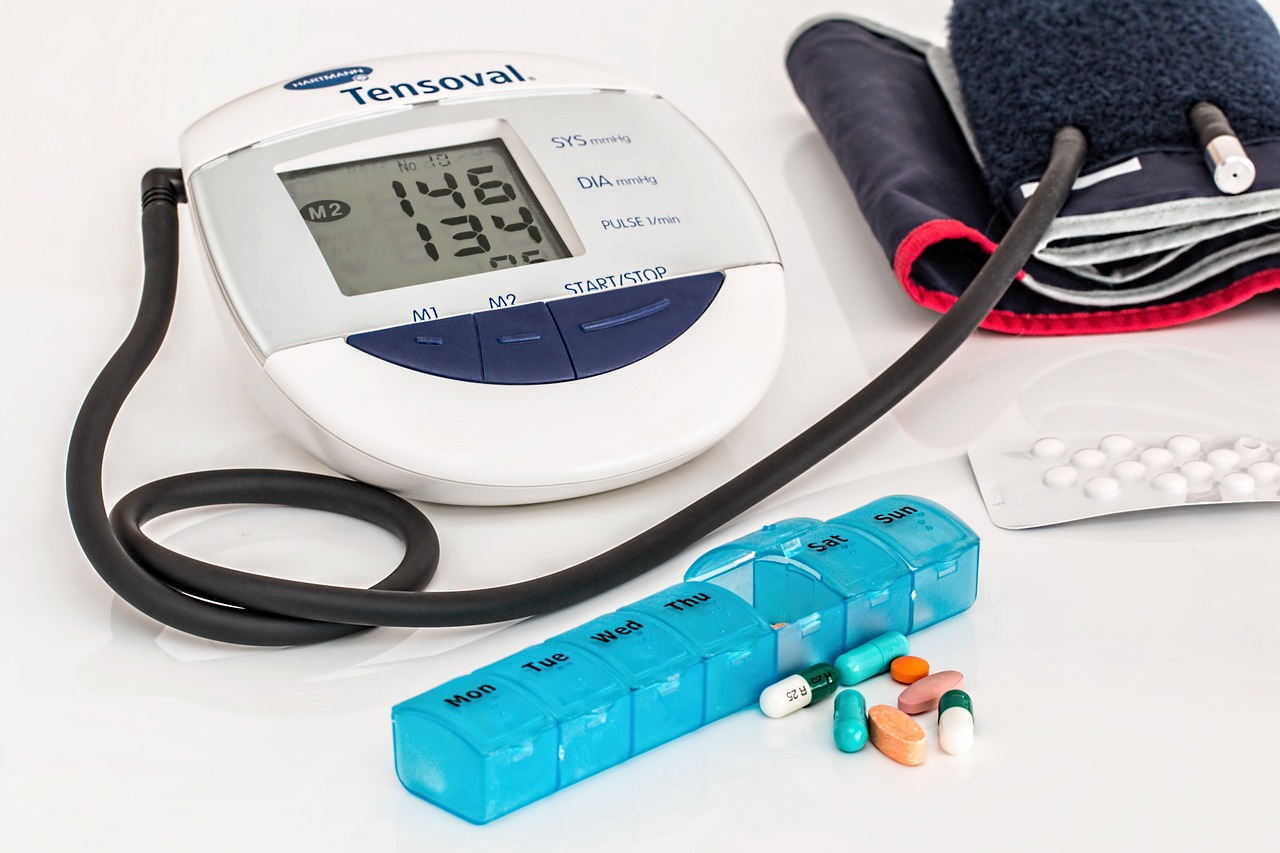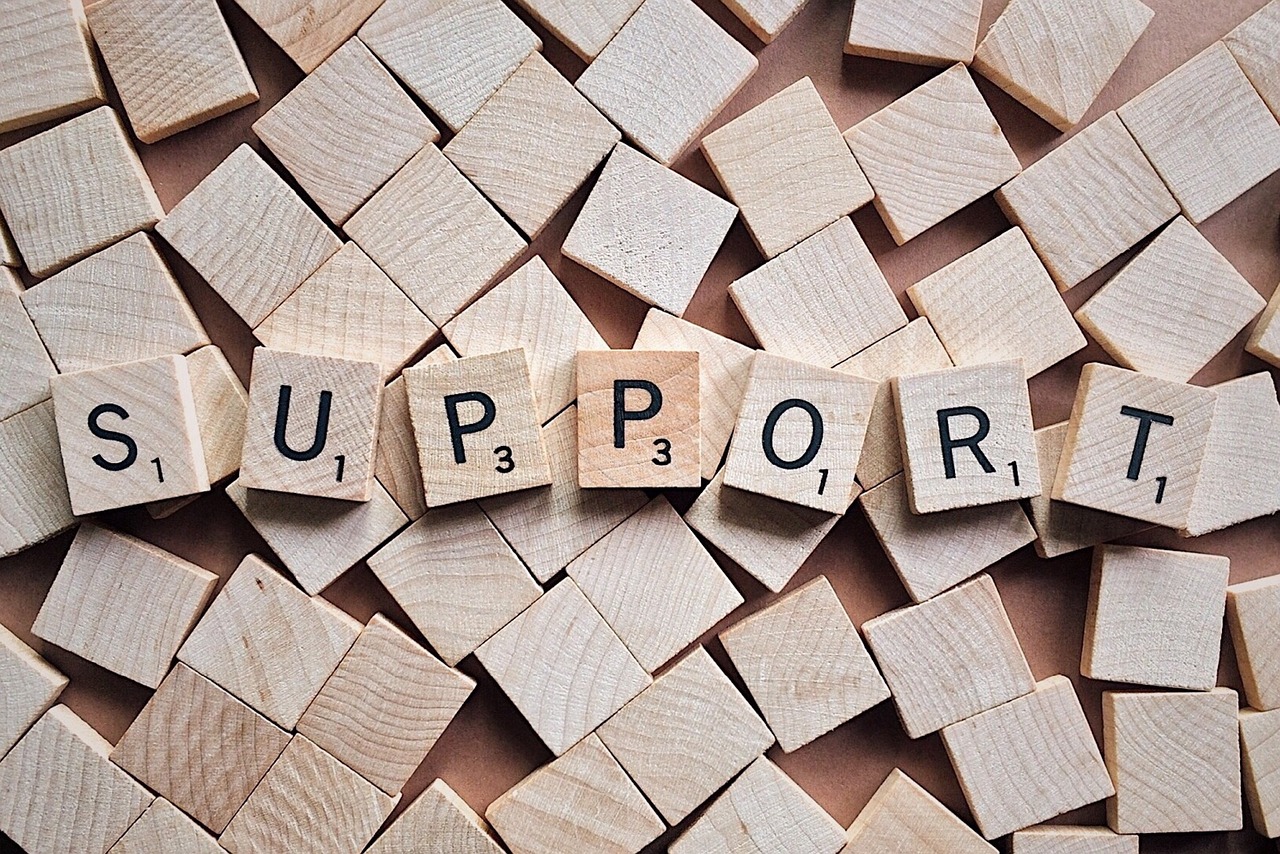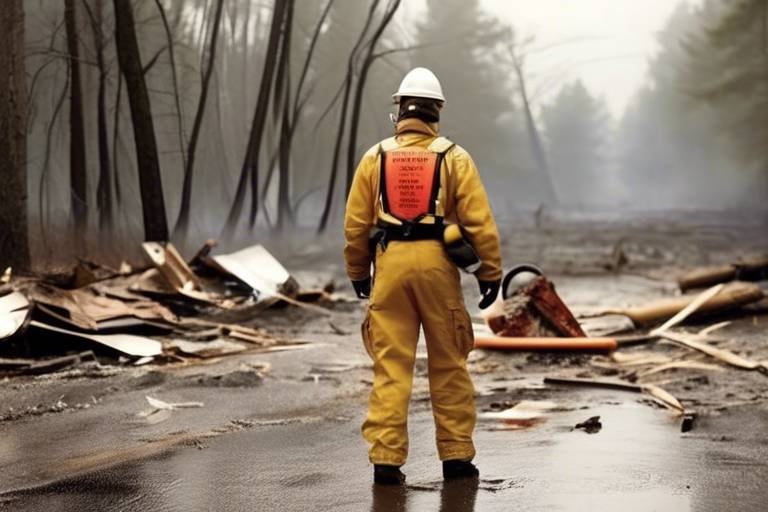Personal Safety: Safeguarding Mental Health
In today's fast-paced world, the connection between personal safety and mental health is more crucial than ever. Imagine walking down a street, feeling a sense of unease creeping in; that feeling can ripple through your emotional state, affecting your mental well-being. Personal safety isn't just about physical protection; it encompasses emotional and psychological security as well. When you feel safe, you are more likely to thrive, both mentally and emotionally. This article explores the intricate relationship between personal safety and mental health, emphasizing strategies to protect oneself in various environments.
Understanding personal safety is essential for maintaining mental health. Think of it this way: when you're in a secure environment, your mind can focus on growth, creativity, and joy. On the flip side, a lack of safety can lead to feelings of anxiety, fear, and helplessness. This section delves into how a sense of security contributes to emotional well-being and overall psychological resilience. Feeling safe allows individuals to engage fully in their lives, fostering healthier relationships and a more positive outlook. It's like having a sturdy foundation for a house; without it, everything else can crumble.
Recognizing potential threats to personal safety is essential. Awareness is the first step in safeguarding your mental health. Threats can come in various forms, each impacting our psyche differently. They can be physical, verbal, or even environmental. Understanding these threats can empower you to take proactive measures. Here are some types of threats to consider:
- Physical Threats: These include any form of violence or harassment that can lead to significant anxiety and trauma.
- Verbal and Emotional Abuse: Often more insidious, this type of abuse can leave long-lasting scars on mental health.
- Environmental Factors: The safety of your neighborhood can greatly influence your emotional well-being.
Physical threats can lead to significant anxiety and trauma. Imagine experiencing a mugging or witnessing an act of violence; such experiences can leave you feeling vulnerable and unsafe, even in familiar environments. The psychological impact of these events can be profound, often leading to heightened anxiety, post-traumatic stress disorder (PTSD), or even depression. It's vital to address these issues head-on, whether through personal strategies or professional help.
Verbal and emotional abuse can be incredibly damaging yet often goes unnoticed. It’s like a slow poison, gradually eroding self-esteem and confidence. The long-term mental health effects of such abuse can include chronic anxiety, depression, and a pervasive sense of worthlessness. Recognizing these forms of harm is the first step toward healing. If you or someone you know is experiencing this type of abuse, it's crucial to seek support and take action.
Environmental factors, such as neighborhood safety, significantly influence mental health. Living in a safe, nurturing environment can promote peace of mind and emotional stability, while an unsafe environment can lead to chronic stress and anxiety. Think about it: if you’re constantly worried about your safety, how can you focus on anything else? This part explores how living in a safe or unsafe environment affects emotional well-being, emphasizing the need to advocate for safer communities.
Coping strategies are vital for maintaining mental health in the face of threats. Just like a superhero needs a utility belt filled with gadgets, you need a toolkit of techniques to enhance your emotional resilience. Some effective strategies include mindfulness practices, physical exercise, and engaging in hobbies that bring you joy. These techniques can help you manage stress and anxiety, empowering you to face challenges with confidence.
A strong support network is essential for personal safety and mental health. Relationships with friends, family, and community members can provide emotional support and security. Imagine having a safety net; when you fall, there are people to catch you. This section discusses how nurturing these relationships can create a protective bubble around you, making it easier to navigate life's challenges.
Professional help plays a crucial role in safeguarding mental health. Therapy and counseling can be transformative, helping individuals address trauma and enhance coping mechanisms. A trained professional can provide you with tools to manage anxiety, heal from past experiences, and develop a healthier mindset. Don’t hesitate to reach out; seeking help is a sign of strength, not weakness.
Utilizing community resources can bolster personal safety. Many local organizations and services offer support and guidance for mental health challenges. These resources can range from hotlines to support groups, providing a sense of belonging and understanding. Engaging with community resources can be a lifeline, connecting you with others who share similar experiences and challenges.
1. What are the signs that I may need to seek help for my mental health?
Signs may include persistent feelings of sadness, anxiety, or hopelessness, changes in sleep or appetite, or difficulty functioning in daily life.
2. How can I build a strong support network?
Start by reaching out to friends and family, joining local community groups, or participating in social activities that interest you.
3. What coping strategies can I use to manage anxiety?
Techniques such as deep breathing, mindfulness meditation, physical activity, and journaling can be effective in managing anxiety.
4. How can I identify emotional abuse in my relationship?
Emotional abuse may involve manipulation, constant criticism, or isolation from friends and family. Recognizing these signs is crucial for seeking help.

The Importance of Personal Safety
Understanding personal safety is not just about avoiding physical harm; it's about creating a foundation for emotional well-being. When we feel safe, our minds can focus on growth, creativity, and connection rather than survival. Imagine trying to concentrate on a complex project at work while constantly worrying about your safety. It's nearly impossible, right? That’s the power of a secure environment—it allows us to thrive rather than just survive.
A sense of security is akin to a warm blanket on a chilly night. It wraps around you, providing comfort and assurance that you are protected. When we feel safe, our bodies release endorphins, which help to reduce stress and enhance our mood. On the flip side, when personal safety is compromised, it can lead to feelings of anxiety, depression, and a host of other mental health issues. The connection between safety and mental health is undeniable; one directly influences the other.
To illustrate this further, let’s consider a few key aspects of personal safety and their impact on mental health:
- Emotional Stability: A secure environment fosters emotional stability. When we know we are safe, we can engage more fully in our personal and professional lives.
- Resilience: Feeling safe enhances our resilience. We are better equipped to handle challenges and setbacks when we don't have to worry about our basic safety needs.
- Social Connections: Safety allows us to build and maintain relationships. When we feel secure, we are more likely to reach out to others, creating a supportive network that bolsters mental health.
Furthermore, personal safety plays a critical role in establishing trust—both in ourselves and in others. When we feel secure, we are more likely to trust our instincts and make decisions that align with our values. This trust extends to our relationships, fostering deeper connections with friends, family, and the community. In contrast, a lack of safety can lead to isolation and withdrawal, further exacerbating mental health challenges.
In summary, the importance of personal safety cannot be overstated. It is a fundamental component of our overall mental health and well-being. By prioritizing safety in our lives, we create a solid foundation for emotional resilience, improved relationships, and a more fulfilling life. So, as we explore the various threats to personal safety and the strategies to combat them, let’s remember that the ultimate goal is to protect not just our physical selves but our mental health as well.

Identifying Personal Threats
Recognizing potential threats to personal safety is essential for maintaining a healthy mental state. Think of it like walking through a forest: if you’re unaware of the lurking dangers, you might trip over a hidden root or, worse, encounter a wild animal. In life, these “dangers” can manifest in various forms, each having a distinct impact on our emotional well-being. By identifying these threats, we empower ourselves to take proactive measures to safeguard our mental health.
There are several categories of threats that can affect us. Understanding these categories is crucial in developing a keen sense of awareness. Here are some types of threats to consider:
- Physical Threats: These are the most apparent dangers, such as violence or harassment. They can lead to significant anxiety and trauma, leaving emotional scars that may take time to heal.
- Verbal and Emotional Abuse: Often more insidious, this type of abuse can chip away at our self-esteem and mental health without any visible signs. The long-term effects can be devastating.
- Environmental Factors: The safety of your surroundings plays a crucial role in your mental health. Living in a high-crime area can create constant stress, while a safe neighborhood fosters a sense of peace.
Physical threats are perhaps the most tangible and frightening. Experiences of violence or harassment can trigger a cascade of emotions, from fear to helplessness. The psychological toll can be immense, leading to conditions such as post-traumatic stress disorder (PTSD) or chronic anxiety. It’s crucial to address these experiences head-on, seeking support or professional help when necessary. Consider this: if your home was broken into, you wouldn’t just repair the door; you’d also want to feel safe again. The same principle applies to emotional wounds.
On the other hand, verbal and emotional abuse can often be more difficult to recognize. It’s like being in a room with flickering lights; you know something’s off, but it’s hard to pinpoint exactly what it is. This type of abuse can manifest in subtle ways, such as constant criticism or manipulation, leading to a slow erosion of self-worth. Over time, the effects can be just as damaging as physical threats, impacting your ability to trust yourself and others.
Lastly, we cannot overlook the impact of environmental factors. Imagine living in a neighborhood where you hear sirens every night. The constant reminder of danger can create an underlying sense of anxiety that permeates every aspect of your life. Safe environments, in contrast, can enhance your emotional well-being, providing a comforting backdrop for personal growth and resilience.
In summary, identifying personal threats is a multi-faceted process that requires vigilance and self-awareness. By understanding the different types of threats we face, we can take proactive steps to protect our mental health. Whether it’s through seeking support for physical trauma, recognizing the signs of emotional abuse, or advocating for safer living conditions, the journey to safeguarding our mental health begins with awareness.
Q: How do I know if I'm experiencing emotional abuse?
A: Emotional abuse can be subtle. Look for patterns of manipulation, constant criticism, or feelings of worthlessness that arise from your interactions.
Q: What should I do if I feel unsafe in my environment?
A: It's essential to assess your situation. If you feel threatened, consider reaching out to local authorities or support services that can help you create a safety plan.
Q: Can therapy help me deal with the effects of personal threats?
A: Absolutely! Therapy can provide a safe space to process your experiences and develop coping strategies to enhance your emotional resilience.

Physical Threats
When we talk about personal safety, physical threats are often the first things that come to mind. These can range from the obvious, like the risk of violence, to more subtle forms of intimidation. The impact of these threats on our mental health can be profound. Imagine walking down the street and feeling an overwhelming sense of fear because of a past experience or the stories you've heard. That feeling isn't just a fleeting moment; it can linger, affecting your daily life and emotional well-being.
Physical threats can manifest in various ways, including:
- Violence: This includes any form of physical harm, whether it’s from a stranger, an acquaintance, or someone close to you. The trauma from such experiences can lead to anxiety, depression, and even PTSD.
- Harassment: This can occur in many environments—at work, on public transport, or even online. Constantly feeling unsafe can create a state of heightened alertness, which is exhausting both mentally and physically.
- Accidents: While not always intentional, the fear of accidents—be it on the road or in the workplace—can also weigh heavily on one’s mind, leading to stress and anxiety about everyday activities.
The psychological effects of experiencing physical threats can be long-lasting. Individuals may develop a hyper-vigilant state, where they are constantly on the lookout for danger, which can lead to chronic stress. This state of mind can affect not just your mental health but also your physical health, leading to issues like insomnia, headaches, and weakened immune responses. It's like living in a constant state of fight or flight, where your body is always ready to react to perceived threats, even if they aren't present.
Addressing these physical threats is crucial for mental health. It’s essential to talk about these experiences, whether through therapy or support groups. Recognizing that you are not alone in these feelings can help alleviate some of the burdens. Additionally, learning self-defense techniques or taking personal safety courses can empower individuals, providing them with the skills and confidence to navigate their environments more safely.
In summary, physical threats are not just about the immediate danger; they create a ripple effect that can impact mental health for years to come. By understanding these threats and taking proactive steps to address them, we can create a safer, more supportive environment for ourselves and others.

Verbal and Emotional Abuse
Verbal and emotional abuse can often feel like a silent storm, brewing beneath the surface, yet wreaking havoc on one's mental health. Unlike physical abuse, which leaves visible scars, verbal and emotional abuse can be insidious, making it harder to identify and address. This form of abuse can manifest in various ways, including constant criticism, humiliation, manipulation, and even gaslighting. The emotional toll can be profound, leading to issues such as anxiety, depression, and a diminished sense of self-worth.
Imagine being in a relationship where your partner's words cut deeper than any knife. Each insult, each belittling comment, chips away at your confidence, leaving you feeling vulnerable and isolated. Over time, this can lead to a cycle of self-doubt and fear, making it increasingly difficult to escape the clutches of such toxic dynamics. The effects are not just temporary; they can linger long after the abusive words have been spoken, leaving emotional scars that take years to heal.
Recognizing the signs of verbal and emotional abuse is crucial for anyone who may be affected. Here are some common indicators:
- Frequent criticism that feels more personal than constructive.
- Manipulative behavior aimed at controlling your feelings or actions.
- Gaslighting, where your reality is questioned, causing confusion and self-doubt.
- Isolation from friends and family, making you dependent on the abuser.
It's important to understand that the impact of verbal and emotional abuse can extend beyond the individual. It can ripple through families and communities, affecting relationships and social dynamics. Those who experience this type of abuse may find it challenging to form healthy relationships in the future, often carrying the weight of their past experiences into new interactions. This cycle can perpetuate a sense of fear and mistrust, creating barriers to emotional connection.
Addressing verbal and emotional abuse involves both recognition and action. Seeking support from friends, family, or mental health professionals can provide a safe space to process these experiences. Therapy can be particularly beneficial, offering strategies to rebuild self-esteem and develop healthier communication patterns. Remember, breaking free from the cycle of abuse is not just about leaving a toxic relationship; it’s about reclaiming your sense of self and fostering emotional resilience.

Environmental Factors
When we talk about personal safety, we often think of immediate physical threats, but we can't overlook the profound impact that our environment has on our mental health. Imagine living in a neighborhood where the streets are filled with graffiti, the sounds of sirens are a regular occurrence, and you constantly feel on edge. This kind of environment can create a sense of vulnerability that seeps into your emotional well-being. On the other hand, a safe and nurturing environment can foster a sense of security that promotes mental resilience.
Environmental factors can manifest in various ways, influencing our stress levels, mood, and overall mental health. For instance, consider the following aspects:
- Neighborhood Safety: Living in a high-crime area can lead to chronic stress and anxiety. The constant worry about personal safety can take a toll on mental health, leading to conditions such as depression or PTSD.
- Access to Green Spaces: Studies show that access to parks and nature can significantly improve mental health. Green spaces provide a sanctuary for relaxation and a break from the hustle and bustle of urban life.
- Community Engagement: Environments that foster community connections can enhance feelings of safety and belonging. When people feel connected to their neighbors, it can create a support system that buffers against mental health challenges.
Moreover, environmental factors aren't just about physical surroundings; they also encompass social dynamics. A toxic workplace or a stressful home environment can lead to emotional distress. The atmosphere in which we live and work plays a critical role in shaping our mental landscape. It's like the difference between a garden filled with vibrant flowers and one choked with weeds. The healthier the environment, the more likely we are to thrive mentally.
In conclusion, understanding the influence of environmental factors on personal safety and mental health is essential. By recognizing the importance of our surroundings, we can take proactive steps to create a safe and supportive environment for ourselves and others. Whether it's advocating for safer neighborhoods, promoting access to green spaces, or fostering community ties, every effort counts towards building a healthier mental state.
- How can I improve my neighborhood's safety? Engaging with local community groups, attending town hall meetings, and collaborating with law enforcement can help address safety concerns.
- What are some signs that my environment is affecting my mental health? Signs may include increased anxiety, feelings of isolation, or a general sense of hopelessness.
- How can I create a more supportive environment for mental health? Building connections with neighbors, participating in community events, and encouraging open discussions about mental health can create a more supportive atmosphere.

Developing Coping Strategies
In today's fast-paced world, developing effective coping strategies is essential for maintaining mental health, especially when faced with personal safety threats. Think of coping strategies as your emotional toolbox—each tool serves a specific purpose, helping you to navigate life’s challenges. Just like a mechanic wouldn’t go to work without their toolbox, you shouldn’t tackle emotional stress without your own set of coping mechanisms.
One of the most effective strategies is practicing mindfulness. This technique encourages you to stay present in the moment, helping to reduce anxiety and promote a sense of calm. Imagine trying to balance on a tightrope; if you focus on the ground below, fear can overwhelm you. But if you concentrate on your balance and the path ahead, you’re more likely to succeed. Mindfulness works similarly, allowing you to center your thoughts and emotions amid chaos.
Another powerful tool is physical activity. Engaging in exercise not only boosts your physical health but also releases endorphins, which are natural mood lifters. Whether it's a brisk walk, a dance session, or hitting the gym, moving your body can significantly enhance your mental resilience. Just like a pressure cooker needs a release valve to prevent an explosion, regular exercise helps release built-up stress and tension.
Additionally, journaling can be a transformative strategy. Writing down your thoughts and feelings provides an outlet for your emotions and can help clarify your mind. It’s like having a conversation with yourself, where you can express fears and frustrations without judgment. This practice can also help identify patterns in your thoughts, making it easier to recognize triggers and develop proactive responses.
Furthermore, establishing a routine can create a sense of stability in your life. Routines help to mitigate uncertainty, which can be a significant source of anxiety. Consider how comforting it is to have a morning ritual; it sets a positive tone for the day and fosters a sense of control. Incorporating small, manageable tasks into your daily routine can help you feel more grounded, even when external circumstances feel unpredictable.
Lastly, don’t underestimate the power of social connections. Building and maintaining relationships with friends and family can provide emotional support and security. Sharing your experiences with others can lighten the burden and remind you that you’re not alone in your struggles. Think of it as a safety net; when you feel like you might fall, knowing that someone is there to catch you makes all the difference.
In summary, developing coping strategies is not just about surviving; it’s about thriving. By incorporating mindfulness, physical activity, journaling, establishing routines, and fostering social connections into your life, you can enhance your emotional resilience and better safeguard your mental health. Remember, it’s okay to seek help and explore different strategies until you find what works best for you. After all, just like every toolbox is unique, so too are the coping mechanisms that resonate with each individual.

Building a Support Network
When it comes to safeguarding our mental health, one of the most vital aspects is building a strong support network. Imagine trying to navigate a stormy sea without a lifeboat; that’s what facing life’s challenges can feel like without a solid group of people around you. A support network is not just a collection of acquaintances; it’s a circle of trusted individuals who provide emotional and practical support during tough times. This network can include friends, family, colleagues, and even community members who understand your struggles and can offer assistance.
Having a reliable support system can significantly enhance your emotional resilience. When you feel overwhelmed, knowing that there are people who care about you can make a world of difference. It’s like having a safety net that catches you when you fall. But how do you go about building this network? Start by reaching out to those who already play a role in your life. Consider the following:
- Identify Key Individuals: Think about who you can trust and rely on. This could be a close friend, a family member, or even a colleague who has shown genuine concern for your well-being.
- Communicate Openly: Don’t hesitate to express your feelings and needs. Open communication fosters deeper connections and allows others to understand how they can support you.
- Engage in Activities: Participate in social activities or support groups that resonate with your interests. This not only helps in meeting new people but also strengthens existing relationships.
It’s essential to remember that building a support network is an ongoing process. Just as relationships require nurturing, so does your network. Regular check-ins, shared experiences, and mutual support can help fortify these connections. Furthermore, don’t underestimate the power of community resources. Local organizations often provide group therapy sessions, workshops, and events where you can meet like-minded individuals who share similar challenges.
In times of crisis, having someone to talk to can be invaluable. Whether it’s a friend who listens without judgment or a family member who offers practical help, these connections can alleviate feelings of isolation and anxiety. Think of your support network as your personal cheer squad, always ready to lift you up when the going gets tough. They can provide not just emotional support but also practical advice and different perspectives that can help you navigate through difficult situations.
Lastly, don’t forget about the importance of reciprocity in these relationships. Just as you seek support, be prepared to offer it as well. Being there for others not only strengthens your bonds but also enhances your sense of purpose and belonging. It’s a two-way street that fosters community and resilience, creating a more robust network for everyone involved.
1. What if I don’t have a support network?
If you feel like you don’t have a support network, start small. Reach out to acquaintances or join local groups that align with your interests. Over time, these connections can grow into meaningful relationships.
2. How do I maintain my support network?
Maintaining a support network requires effort. Schedule regular catch-ups, check in on friends, and be proactive in reaching out. The more you invest in these relationships, the stronger they will become.
3. Can professional help be part of my support network?
Absolutely! Therapists, counselors, and support groups are excellent resources for emotional support and can complement your personal relationships.
4. What if I feel like I’m a burden to my friends?
It’s common to feel this way, but remember that true friends want to be there for you. Open communication can help alleviate these feelings; often, they appreciate your honesty and want to support you.

Seeking Professional Help
When it comes to safeguarding our mental health, seeking professional help can be one of the most empowering steps we take. Imagine navigating a dense forest without a map; you might feel lost, anxious, and overwhelmed. Now, picture having a skilled guide by your side, helping you find the safest paths and navigate the challenges. That's what a therapist or counselor can do for you in your mental health journey. They provide not just a listening ear but also expert insights and strategies tailored to your unique situation.
Many people hesitate to seek help due to stigma or misconceptions about therapy. However, it's crucial to understand that acknowledging the need for assistance is a sign of strength, not weakness. Just like you would visit a doctor for a physical ailment, a mental health professional is equipped to address emotional and psychological struggles. They can help you process traumatic experiences, develop coping mechanisms, and build resilience against future challenges.
In therapy, you can explore various techniques that resonate with you. For instance, cognitive-behavioral therapy (CBT) focuses on changing negative thought patterns, while mindfulness practices can help you stay grounded in the present moment. Each approach is like a tool in a toolbox, and a skilled therapist will help you choose the right tools for your needs.
Moreover, therapy is not a one-size-fits-all solution. It's essential to find a professional who aligns with your values and understands your specific circumstances. This could mean trying a few different therapists before finding the right fit. Don't be afraid to ask questions during your initial sessions; it’s important to feel comfortable and secure in this vulnerable space.
Another aspect worth mentioning is the importance of ongoing support. Therapy can be a valuable resource, but it’s often most effective when combined with a strong support network. This could include friends, family, or support groups. Engaging with others who share similar experiences can help reinforce the lessons learned in therapy and provide additional emotional safety.
In conclusion, seeking professional help is a vital step in protecting your mental health. It’s about taking control of your emotional well-being and investing in your future. Just as you would prepare for a journey with the right tools and guidance, approaching mental health with the same seriousness can lead to profound changes in your life.
- What types of professionals can I seek for mental health support? You can reach out to psychologists, psychiatrists, licensed counselors, or social workers, each specializing in different aspects of mental health.
- How do I know if I need therapy? If you find yourself feeling overwhelmed, anxious, or unable to cope with daily life, it may be time to consider professional help.
- What should I expect during my first therapy session? Expect to discuss your reasons for seeking help, your history, and any specific challenges you're facing. It’s a safe space to share and explore your feelings.
- Is therapy really effective? Yes! Many individuals report significant improvements in their mental health and overall well-being after engaging in therapy.

Community Resources
When it comes to safeguarding our mental health, play an indispensable role. These resources act as a lifeline, offering support, guidance, and practical assistance to individuals facing mental health challenges. Whether you're dealing with anxiety, depression, or the aftermath of trauma, local organizations and services can provide a helping hand. Imagine a safety net woven from the threads of community, where each strand represents a service or support group ready to catch you when you fall.
Many communities have established various resources aimed at fostering mental well-being. These can include mental health clinics, support groups, and hotlines that are easily accessible. For instance, mental health clinics often provide professional counseling services at little to no cost. These clinics serve as a sanctuary where individuals can discuss their feelings and experiences in a safe environment.
Support groups, on the other hand, offer a unique opportunity for individuals to connect with others who are going through similar challenges. They create a sense of belonging and community, reminding us that we are not alone in our struggles. These groups often focus on specific issues, such as grief, addiction, or anxiety, allowing participants to share their experiences and coping strategies.
Additionally, hotlines can be a quick and effective way to seek help in times of crisis. Many organizations operate 24/7 hotlines staffed by trained professionals who can provide immediate support and guidance. It’s like having a friend on the other end of the line, ready to listen and offer advice when you need it most.
Here’s a quick overview of some common community resources that may be available:
| Resource Type | Description | Contact Information |
|---|---|---|
| Mental Health Clinics | Local clinics offering counseling and therapy services. | [Insert Local Contact Information] |
| Support Groups | Groups focusing on specific mental health issues for shared experiences. | [Insert Local Contact Information] |
| Crisis Hotlines | 24/7 support for immediate assistance during crises. | [Insert Local Contact Information] |
Utilizing these community resources not only aids in managing personal safety but also fortifies our mental health. By reaching out and engaging with these services, we can build a robust support system that empowers us to face challenges head-on. Remember, seeking help is not a sign of weakness; rather, it's a courageous step towards healing and resilience.
So, the next time you're feeling overwhelmed, consider exploring the community resources available to you. They are there to help, and you don't have to navigate this journey alone. After all, just like a ship needs a harbor to dock safely, we too need a supportive community to weather the storms of life.
Frequently Asked Questions
- Why is personal safety important for mental health?
Personal safety is crucial because it creates a sense of security, which directly impacts emotional well-being. When individuals feel safe, they are more likely to experience positive mental health and resilience against stressors.
- What are some common physical threats to personal safety?
Common physical threats include violence, harassment, and robbery. Such experiences can lead to significant anxiety and trauma, affecting one's mental health and overall quality of life.
- How can I recognize verbal and emotional abuse?
Verbal and emotional abuse can be subtle and manipulative. Signs include constant criticism, gaslighting, and emotional withdrawal. Recognizing these behaviors is the first step toward addressing and overcoming the harm they cause.
- What coping strategies can help maintain mental health?
Effective coping strategies include mindfulness practices, deep breathing exercises, and journaling. Engaging in physical activity and seeking social support are also powerful ways to enhance emotional resilience.
- How can I build a strong support network?
Building a support network involves nurturing relationships with friends, family, and community members. Regular communication, sharing experiences, and being there for each other can create a strong foundation of emotional support.
- When should I seek professional help for mental health issues?
If you find that your mental health is significantly impacting your daily life, or if you're struggling to cope with trauma, it’s essential to seek professional help. Therapy can provide valuable tools and insights for managing your mental well-being.
- What community resources are available for mental health support?
Many communities offer resources like counseling centers, support groups, and helplines. Local organizations often provide workshops and seminars that can help individuals learn more about mental health and personal safety.



















